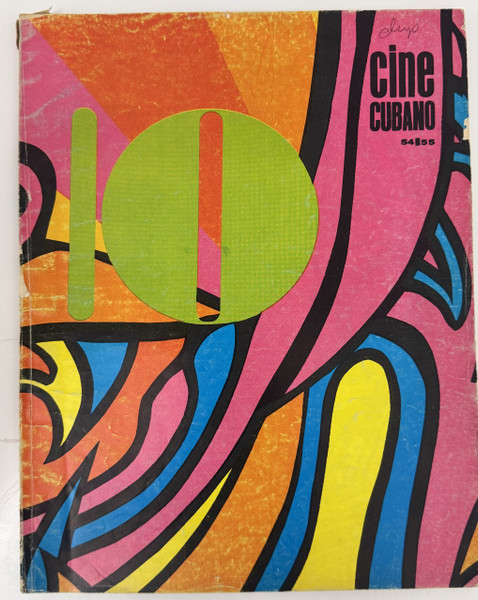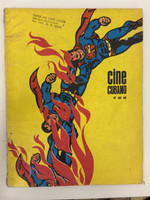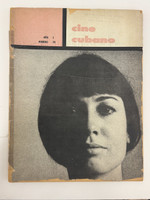- Travel
-
Exhibits
- La Portada Cubana
- Immortal Cuba: Artists Take on Their Heroes
- Seattle Poster Exhibit
- Sandra Dooley & Alejandrina Cué
- The Art of Wayacón
- Cuban Folk Art
- Cuba In Black And White
- 25 Years of Cuban Art Space
- Summer Folk Art Expo
- ¡SPRING AWAKENING FROM CUBA!
- Celebrating The Art Of Cuban Women
- Celebrating Paper, Affordable Art from Cuba
- Art of the Revolution
- Outsider Art
- Lost and Found
- En la lucha: Celebrating Cuban Women and Their Art
- Cuban Art Stash
- 100 Fires: 5 Cienfuegos Artists' Work on Paper
- Waya + Monte! Magic Realism in Cienfuegos
- Viva Cuba Viva! Poster Show
- Cultivando Sueños
- Black Lives Matter in Cuba Jan 9-March 27
- Leandro Soto: Crónicas visuales
- Cuban Canvas
-
Archive
- Global Reflection 2018: Spirit and Community
- Exhibit in the cloud: Contemporary Works on Paper
- MADE IN CUBA! MINNEAPOLIS EXHIBIT
- Cuban Posters and Photography from CCS collection
- AUTUMN SALE! Sept/Oct 2017
- SPRING ARTS AND CRAFT SALE
- Vuelo Directo/Non Stop: Alberto & Alejandro Lescay
- The Many Faces of Fidel
- Somos
- Made in Cuba!
- The US empire in Cuban graphics
- Made in Cuba/Seattle exhibit
- Entre Nos
- Looking Back
- Cuban Art Space
- Membership/Donate
- About Us
- Cuba News
-
The cover of "Cine Cubano" issues 54-55 presents Tony Fernández Reboiro's exuberant psychedelic design featuring flowing abstract forms in vibrant oranges, greens, yellows, pinks, and blues, with bold "10" numerals prominently displayed to celebrate Cuban revolutionary cinema's tenth anniversary. The dynamic swirling patterns evoke both celebration and movement, reflecting the energy and optimism surrounding Cuban cinema's first decade of achievement under ICAIC's guidance. Holbein's interior layout complements this festive aesthetic with flowing organic forms that frame the contents, creating visual continuity between cover and interior design that emphasizes the magazine's sophisticated approach to commemorative publishing.
This landmark double issue centers on Alfredo Guevara's comprehensive retrospective essay "Reflexiones en torno a una experiencia cinematográfica I" (Reflections on a Cinematographic Experience I), subtitled "El cine cubano tiene 10 años" (Cuban Cinema is 10 Years Old). Guevara's analysis provides authoritative assessment of ICAIC's achievements since its founding in 1959, examining both artistic accomplishments and institutional development during Cuban cinema's formative decade. The retrospective covers the establishment of revolutionary film policy, the development of new aesthetic approaches, international recognition of Cuban films, and the creation of an indigenous film industry capable of competing with established cinema traditions.
Published by the Instituto Cubano del Arte e Industria Cinematográficos to mark this crucial anniversary, the issue features contributions from the generation of filmmakers who created Cuban revolutionary cinema, including Julio García Espinosa, Miguel Torres, Tomás Gutiérrez Alea, José Massip, Manuel Pérez, Santiago Alvarez, José Carlos Mariátegui, Guillaume Apollinaire, Bertolt Brecht, Pastor Vega, Daniel Díez Torres, Guido Aristarco, and Alejo Carpentier. The comprehensive coverage includes analysis of major Cuban films, discussions of revolutionary aesthetics, examination of cinema's role in cultural transformation, and assessment of international reception of Cuban cinema. The editorial offices at Calle 23 no. 1155, Habana, Cuba, maintained standard subscription accessibility (0.25 pesos per issue in Cuba, 2.75 annual in Cuba, 5.00 international) while documenting this pivotal moment when Cuban cinema had achieved both national significance and international recognition as a major force in Third World revolutionary culture.
-
-
Discover More at the Center for Cuban Studies





![Instituto Cubano del Arte e Industria Cinematográficos / ICAIC (director: Alfredo Guevara), "Cine Cubano" issue 48 - "Cine del Tercer Mundo," [1970s]. Offset print, magazine.](https://cdn10.bigcommerce.com/s-ufzvo/products/5901/images/6486/IMG_8812__28936.1761537538.200.200.jpg?c=2)
![Instituto Cubano del Arte e Industria Cinematográficos / ICAIC (layout: Holbein, cover designer: Reboiro (Antonio Fernández Reboiro), director: Alfredo Guevara), "Cine Cubano" issues 76/77, [1976-1977]. Offset print, magazine.](https://cdn10.bigcommerce.com/s-ufzvo/products/5903/images/6490/IMG_8817__13591.1761537538.200.200.jpg?c=2)
![Instituto Cubano del Arte e Industria Cinematográficos / ICAIC (layout: Holbein, cover design: Reboiro (Antonio Fernández Reboiro), director: Alfredo Guevara), "Cine Cubano" issues 78/79/80, [1978-1980]. Offset print, magazine.](https://cdn10.bigcommerce.com/s-ufzvo/products/5904/images/6491/IMG_8819__36889.1761600195.200.200.jpg?c=2)